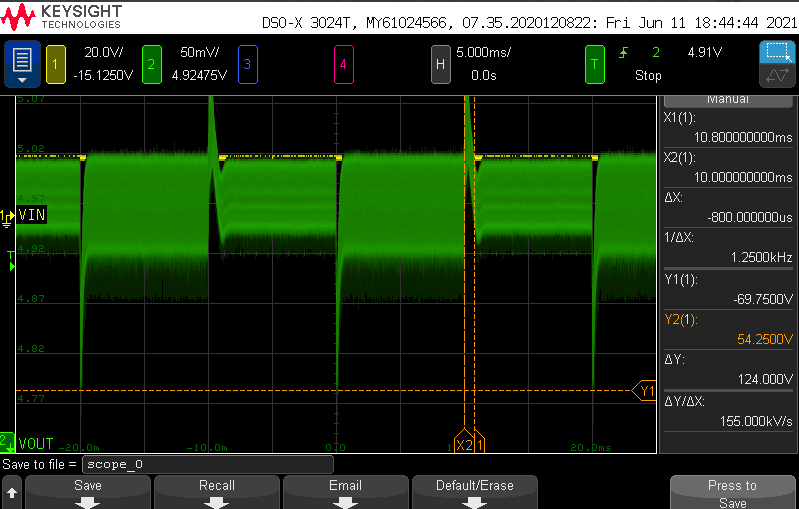I am using TPS5450 buck regulator and trying to measure the transient response but seem to see a weird triangular adjustment before it settles. I can't see anything in the datasheet that would explain this and my design is based on typical suggestions from webbench.
And this is the output response i see when i switch an electronic load between 1A and 0A with 50% duty cycle:
Interestingly, by adding an offset to the load (switching between 1A and 0.15A) the response improves to this (please ignore the Y cursors):

Can someone explain what is happening?



